By Fran McVeigh
Wakelet artifact from April 22, 2021 #G2Great chat can be found here.
Small group instruction is ubiquitous in classrooms across the world. John Hattie found small group instruction has an effect size of .47. (Hattie source) Because that is above the .40 linch pin for effect size, small group instruction is often automatically on a teacher’s list of research-based activities. But . . . What if the teacher (or students) are engaged in an activity during the small group work that has an even higher effect size? Will the learning increase even farther? This post is going to bring some clarity to the purpose and rationale for small group instruction as well as explore some of the main issues with small groups before ending with some tips for re-examining and revising your small group practices to broaden your perspective.
As we begin, it is important to note that “grouping for instruction” has been discussed multiple times on #G2Great that can be found in the many resources listed at the end of this post. But one of the most important books dealing with small group instruction is Barry Hoonan and Julie Wright’s book, What Are You Grouping For? How to Guide Small Groups Based on Readers – Not the Book. This book dug even deeper into some of the issues raised in earlier books by Burkins and Yaris in Who’s Doing the Work and Moses and Ogden in What are the Rest of My Kids Doing?. So let’s get started.
Who forms the small groups? Does it matter?
Is a small group formed by a teacher typically for the purpose of instruction, assessment, collaborating, conferencing or learning?
The initial organization of the group will often set the tone and culture of the group. Sometimes groups are “assigned” or formed by the teacher. There may be a variety of reasons for teacher assigned grouping especially for short-term, flexible groupings. Some of those were included in the question: instruction, assessment, collaborating, conferencing. Other reasons might include re-teaching, teaching lead students who will teach other students, an opportunity to double check student knowledge, or even forming an activist group. Laura and Nadine added further considerations during our chat.
Is a small group formed by students for the purpose of instruction, assessment, collaborating, conferencing or learning?
If the students form the small group it may also be a flexible group that varies to match its purpose. It could also include instruction (teaching you what I just learned), assessment, collaborating or conferencing. But other possibilities abound. It could be a student initiated book club, peer revision partnerships, or editing conference group. Check out how Yvette and Mary see student-formed groups progressing.
So before we go any farther, let’s check some common critical understandings about small groups so that we are all talking about the same thing.
| What is a small group? | Is it a label? Is it a grouping? If yes, how many students does it take for a small group? Two students? Three students? Three or more students? Is there a maximum size for a small group? It depends! Typically more than two. Purpose dictates the size but having partners within the group allows for more talk and practice. |
| Who decides whether instruction or practice is a small group or whole class? | The teacher? The students? Data? Doug Fisher reminds us that: “Assessment data helps us plan instruction, especially in small groups so that specific needs are addressed.” One rule of thumb is that if more than half the class needs the information, then whole class instruction is more expedient, efficient and effective. |
| What might I provide? | Strategic, just-in-time instruction: this may be pre-teaching, re-teaching or extended teaching from the lesson just taught. It all depends on student needs. |
| WHY might I use small groups? | Everyone does NOT need the same thing. |
| What might students need from small group instruction? | To Differentiate: To follow up on instruction or assessment data in order to answer the question – Who needs more time? To Intensify: Quick, yet intense reinforcement, continued practice to move closer to automaticity For Independence: So students can practice and the teacher can observe and answer questions about process or observe competence, confidence and habits of mind. |
Regie Routman who has been a part of #G2Great and is highly respected for her practical and knowledgeable approach to education defined four issues with small groups: equity, professional learning, reading, and management. (link) She talks about these in terms of guided reading but they also apply for many small group settings.
- Equity
“No teacher deliberately sets out to disadvantage students and, yet, we unintentionally do so all the time.
Students do not become self-directed, joyful readers because teachers and administrators prioritize daily, guided reading groups. Students become readers, in every positive sense of that word, when most of their reading time is dedicated to uninterrupted, voluminous reading of texts they can and want to read.”
Mary and Yvette were again in tune on the issue of equity and small groups.
- Professional learning
Lucy Calkin’s quote used in our chat says so much. How does this vision become a part of professional learning, what we determine as our learning goals, and a part of classroom actions every day? How much professional learning is needed? It depends on how close the desired outcomes are to current instructional practices.
- Reading
Our focus has to be on “teaching readers not teaching reading.” This shift in language is both critical and deliberate. Being responsive to the reader maximizes resource. Small groups that focus on skill and drill minimize resources and often reduces the time that the student has to read. The result is what Richard Allington called the “slow it down curriculum” because the emphasis is on every single skill and quantities of isolated practice that are not helpful for student growth or agency. Susan, Jill, Rhonda and Gen add to our understanding!
Students have to spend time reading in order to improve their reading. This applies to small groups as well. A small group session that does not ever have students reading would be counter productive. One goal of small group sessions would always be to increase the volume of student reading.
- Management –
Regie Routman also says this:
“As well, even though it may be unintentional, managing the management system often winds up taking priority over effective instruction and time for reading, not to mention the enormous amount of time teachers spend planning for management. Sometimes, when teachers are not sufficiently knowledgeable, the management system even becomes the reading curriculum.”
Time at school is finite. There isn’t a second to waste. Not a minute. Time needs to be allocated for those instructional and assessment practices that will not only promote learning but will also fuel student engagement. That means that the most effective and efficient practices need to be sorted out for the student. It’s not about a school-wide adoption of “these top three strategies”. It’s about choosing some strategic strategies and practices, teaching them to students and then allowing the students to choose the one(s) that work best for each individual.
And in the area of management, I have to give a shout out to the late Kathleen Tolan from TCRWP. My jaw hit the floor when I saw Kathleen effectively manage three small groups simultaneously. Yes, SIMULTANEOUSLY. Exquisite Management! Clear planning of two to three days cycles of possibilities that were responsive to students but yet also meant that students were actively engaged in the planning and delivery of the instruction. They all knew their expectations and goals, they came to the group session completely prepared, with the tools and resources that they needed, and they did the work. The. Students. Did. The. Work. Teacher voice did not dominate.
How can we improve the effectiveness of small group instruction?
Andrew Miller in an Edutopia article (link) says that the key strategies for improving small group instruction are:
- Using small group time to listen and learn from students,’
- Making them invitational rather than required,
- Extending learning,
- Providing choices in method and
- Encouraging student-driven lessons. (Edutopia)
Andrew Miller in his closing goes on to say,
“Ultimately, small group instruction, like instruction in general, is reciprocal—a two-way street: “What can I help my students learn?” and “What can I learn from my students?” In our rush to help students, we may miss the opportunity to learn from them to do our jobs as teachers in an even more effective way. In addition to addressing gaps in learning, it’s about looking for opportunities to empower students to take agency in their learning and celebrate their funds of knowledge.”
Where to begin?
Check your purposes for small groups. Where have small groups been effective? What issues have been seen as barriers to effectiveness? How can the issues be minimized? Where can small groups use some re-visioning to improve? Find a “thinking partner” to share your thinking and ideas.
Think about these two final pieces of wisdom from Val and Hannah . . .
| What is our goal? Is it to increase student learning? Is it to empower students so they can and will be lifelong learners? Does our use of small groups reflect our vision of equitable, quality instruction for ALL students? How will you maximize the power of small groups? |
Learning Lenses posts
What Are You Grouping For? How to Guide Small Groups Based on Readers – Not the Book (grades 3-8) August 25, 2018
Breathing New Life into the Power Potential of Small Group Instruction February 28, 2016
What are the Rest of My Kids Doing by Lindsey Moses and Meredith Ogden August 8, 2017
What’s Our Response? Creating Systems and Structures to Support ALL Learners March 20, 2021
Hands Down, Speak Out: Listening and Talking Across Literacy and Math October 10, 2020
Reflecting on My Beliefs: Values + Promises for the Future June 14, 2020
This is Balanced Literacy December 16, 2019
Resources:
Debbie Diller 2007 https://www.stenhouse.com/content/making-most-small-groups
Regie Routman https://regieroutman.org/blog/rethinking-guided-reading-advantage-all-our-learners/
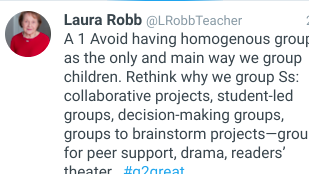

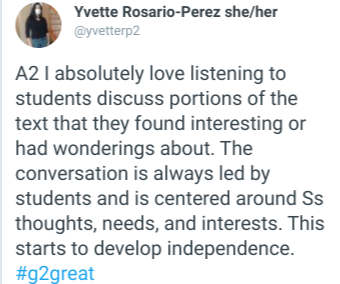
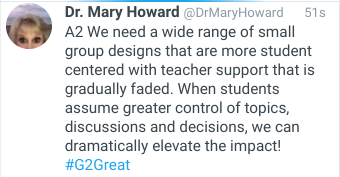
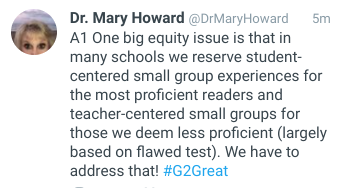

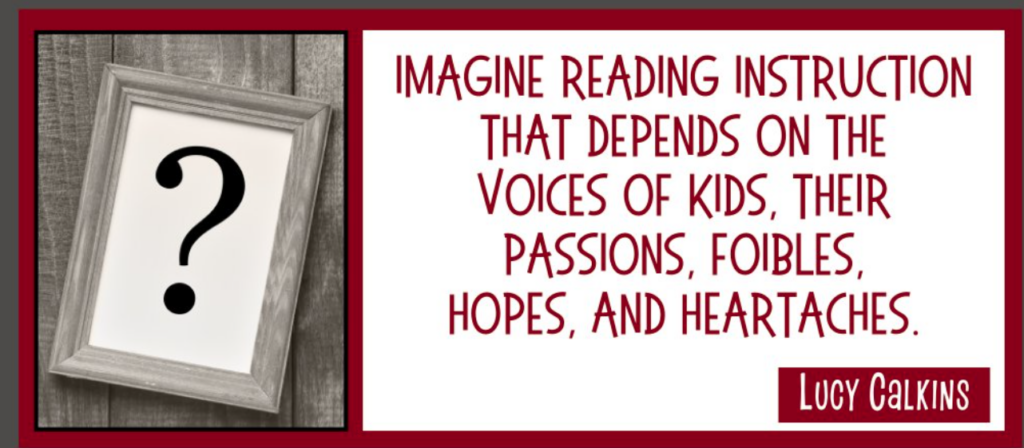
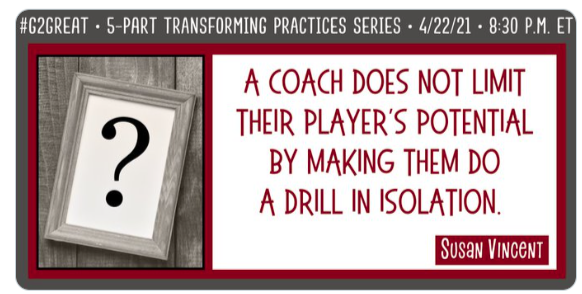
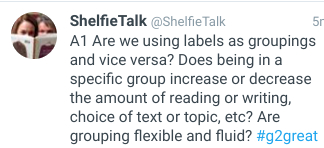
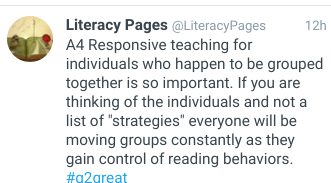


This is excellent! Thanks for pulling it all together for us, Fran!